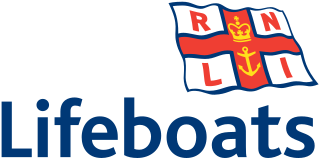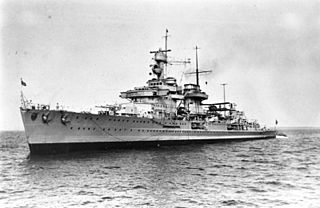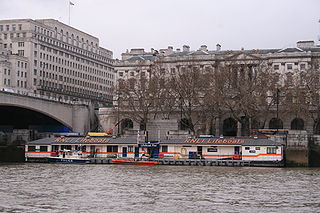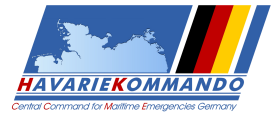
The German Life Saving Association is a relief organization for life saving in Germany. The DLRG is the largest voluntary lifesaving organization in the world.

The Royal National Lifeboat Institution (RNLI) is the largest of the lifeboat services operating around the coasts of the United Kingdom, the Republic of Ireland, the Channel Islands, and the Isle of Man, as well as on some inland waterways.

The United States Life-Saving Service was a United States government agency that grew out of private and local humanitarian efforts to save the lives of shipwrecked mariners and passengers. It began in 1848 and ultimately merged with the Revenue Cutter Service to form the United States Coast Guard in 1915.

SMS Elbing was a light cruiser ordered by the Imperial Russian navy under the name Admiral Nevelskoy from the Schichau-Werke shipyard in Danzig in 1913. Following the outbreak of World War I, the ship was confiscated in August 1914 and launched on 21 November 1914 as SMS Elbing. She had one sister ship, Pillau, the lead ship of their class. The ship was commissioned into the High Seas Fleet in September 1915. She was armed with a main battery of eight 15 cm SK L/45 guns and had a top speed of 27.5 kn.

Nürnberg was a German light cruiser of the Leipzig class built for the Kriegsmarine. She was named after the city of Nuremberg and had one sister ship, Leipzig. Nürnberg was laid down in 1934, launched in December of that year, and completed in November 1935. She was armed with a main battery of nine 15 cm (5.9 in) guns in three triple turrets and could steam at a speed of 32 knots. Nürnberg was the longest-serving major warship of the Kriegsmarine, and the only one to see active service after the end of World War II, though not in a German navy.

The Swedish Sea Rescue Society, formally the Swedish Society for the Saving of Shipwrecked Persons is a Swedish voluntary organisation that works with maritime search and rescue on Swedish lakes and seas. The society runs 70 lifeboat stations, with over 200 rescue vessels and over 2100 volunteers. Of these, more than 300 are on call at any given moment, and can respond to an emergency call within 15 minutes. It is a member of the International Maritime Rescue Federation (IMRF)

The Norwegian Society for Sea Rescue is the only organization wholly dedicated to assisting people and vessels at sea along the extensive Norwegian coastline.

Lifesaving is the act involving rescue, resuscitation and first aid. It often refers to water safety and aquatic rescue; however, it could include ice rescue, flood and river rescue, swimming pool rescue and other emergency medical services. Lifesaving also refers to sport where lifesavers compete based on skills, technique, speed and teamwork. Lifesaving activities specialized in oceanic environment is called surf lifesaving or coastal lifesaving.

SMS Friedrich Carl was a German armored cruiser built in the early 1900s for the German Kaiserliche Marine. She was the second and final member of the Prinz Adalbert class, which was built to provide scouts for the German fleet and station ships in Germany's colonial empire. Friedrich Carl was built by the Blohm & Voss shipyard in Hamburg. She was laid down in August 1901, launched in June 1902, and commissioned in December 1903. She was armed with a main battery of four 21 cm (8.3 in) guns and could reach a top speed of 20 knots.

SMS Prinz Adalbert was an armored cruiser built in the early 1900s for the Imperial German Navy. She was named after Prince Adalbert of Prussia, former Commander-in-Chief of the Prussian Navy, and was the lead ship of her class.

The Tower Lifeboat Station is a lifeboat station on the River Thames in London, UK, operated by the Royal National Lifeboat Institution (RNLI). It is located at Victoria Embankment on the North Bank of the Thames, next to Waterloo Bridge.
A rescue lifeboat is a boat rescue craft which is used to attend a vessel in distress, or its survivors, to rescue crew and passengers. It can be hand pulled, sail powered or powered by an engine. Lifeboats may be rigid, inflatable or rigid-inflatable combination-hulled vessels.

The Seenotdienst was a German military organization formed within the Luftwaffe to save downed airmen from emergency water landings. The Seenotdienst operated from 1935 to 1945 and was the first organized air-sea rescue service.

The Bremen class was a group of seven light cruisers built for the Imperial German Navy in the early 1900s. The seven ships, Bremen, Hamburg, Berlin, Lübeck, München, Leipzig, and Danzig, were an improvement upon the previous Gazelle class. They were significantly larger than the earlier class, and were faster and better armored. Like the Gazelles, they were armed with a main battery of ten 10.5 cm SK L/40 guns and a pair of torpedo tubes.

Wells-next-the-Sea Lifeboat Station is located at the end of Beach Road, about 1 mi (1.6 km) north of the town of Wells-next-the-Sea, on the north coast of the English county of Norfolk.

Cardigan Lifeboat Station is located at Poppit Sands, on the southern side of the River Teifi estuary in North Pembrokeshire, approximately 3 miles (4.8 km) north-west of the town of Cardigan, Wales.

Hermann Marwede is the largest search and rescue cruiser (46-m-class) of German Maritime Search and Rescue Service (DGzRS) and the largest search and rescue cruiser in the world. The ship is based at the SAR-station Helgoland.
The Minden is a ship built in 1985 as a lifeboat as one of a series of seven rescue cruisers of the Deutschen Gesellschaft zur Rettung Schiffbrüchiger in the 23.3 Meter class. The ships were built between 1980 and 1991 by the Schweers shipyard in Berne-Bardenfleth and Abeking & Rasmussen in Lemwerder.

The German Central Command for Maritime Emergencies is the authority for mutual maritime emergency management in the German EEZ of North Sea and in the Baltic Sea. The federal office provides radar and air surveillance, piloting and emergency tugs for ships that are unable to manoeuvre. Head of CCME is Frigate captain Robby Renner.

On 24 October 2023, one person was killed and four others disappeared after two cargo ships, the Isle of Man-flagged Verity and the Bahamian-flagged Polesie, collided in the North Sea near Germany's Heligoland islands, with the Verity sinking.































